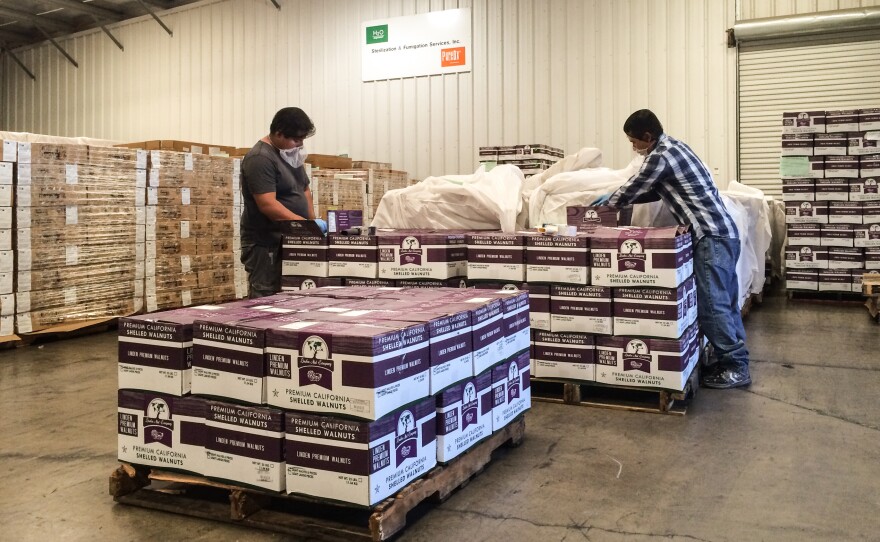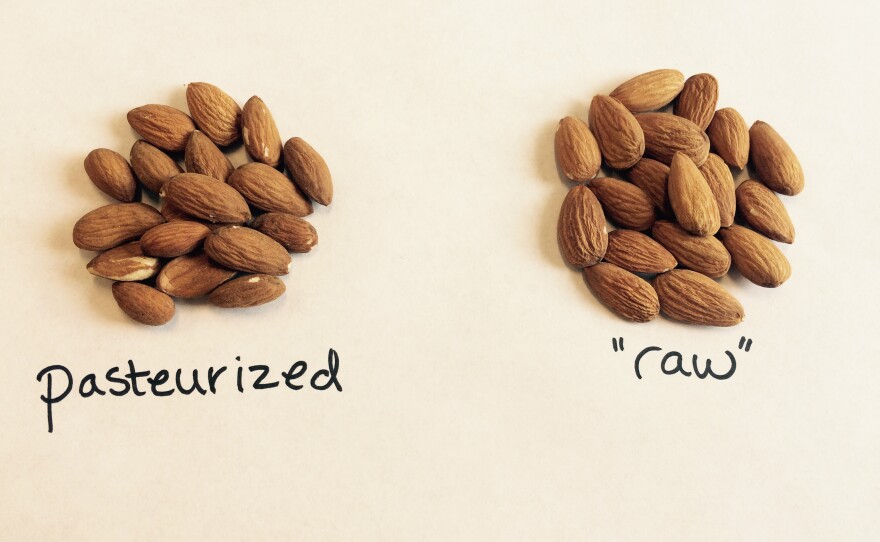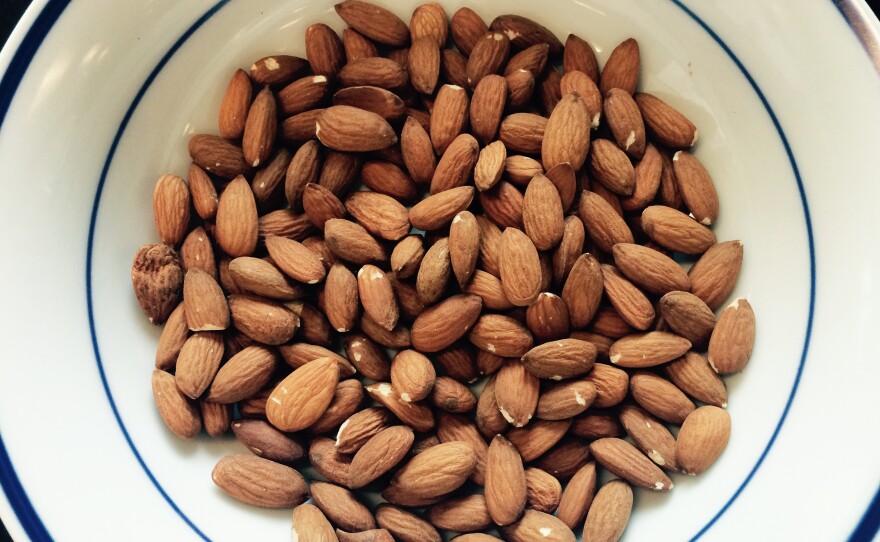


When you're talking about almonds, "raw" may not mean what you think.
All California almonds — which would be virtually all the almonds in the country — are either heat-pasteurized or treated with a fumigant. The processes are intended to prevent foodborne illness. But almond aficionados say the treatments taint the flavor and mislead consumers.
In a warehouse near Newman, Calif., run by the Cosmed Group, millions of almonds are heated in huge metal containers. The temperature inside the chambers gradually rises to 165 degrees. The goal is to ensure through steam pasteurization that the almonds don't carry bacteria from the fields to consumers.
"As the steam is coming out, it rolls around in the chamber so it can penetrate everything," plant manager Dianne Newell explains.
"The whole process from start to finish is about nine hours," says Newell – though the timing can vary widely at different facilities, depending on how they choose to steam the nuts.
Handlers open hundreds of boxes destined for the steaming vats. Almonds aren't the only crop treated here: The facility also processes sunflower seeds, flax seeds, chia seeds, walnuts, hazelnuts, Brazil nuts, pecans, pistachios, cashews, sun-dried tomatoes, dried apricots, dried strawberries and dried blueberries.
But almonds are the only nut, seed or dried fruit that must — by law — be pasteurized. If they're not steamed, they must be fumigated with a chemical called propylene oxide, or PPO.
The regulation is a result of two salmonella outbreaks traced to almonds in the early 2000s. Almonds are not any more susceptible to the bacteria than other nuts and dried goods, but the Almond Board of California wanted to prevent future outbreaks. So the industry asked the U.S. Department of Agriculture (USDA) to implement a rule requiring raw almonds grown in California's Central Valley to be pasteurized. In 2007 the USDA issued the "almond rule."
"We had to deal with it," says Tim Birmingham, who oversees quality assurance for the Almond Board. "We knew that we couldn't deal with it with good agriculture practices alone. We had to implement a definitive control step such as pasteurization."
He says the regulation was written in the consumer's best interest.
"It does, in some cases, take away the consumer's ability to choose a truly raw product," Birmingham allows. "But the intent was really to remove that threat of salmonella on the product, which we know salmonella is there."
When the law came down, Glen Anderson pasteurized a batch of the organic almonds grown on his farm in Hilmar, south of Modesto, in Northern California. He says steaming the nuts changed the moisture and taste of his product.
"The acute flavor that I've grown to expect in a good, organically grown almond just isn't there," says Anderson. The taste, he says, "leans towards cardboard, as opposed to fresh almonds."
Anderson never steamed another batch, but he continues to sell his almonds under an exception within the regulation: As long as he sells his nuts directly to consumers in small batches, he is not legally required to pasteurize.
He stores his almonds in large white freezers so they retain their freshness. With a heavy metal scoop, he transfers a handful of almonds into a Ziploc bag for me to try. I wait a few hours for the almonds to warm up. I taste a sample, then compare it to a pasteurized nut. The main difference I notice is the texture: The steamed almonds are crunchier, and their flavor is slightly less rich.
But it's not just pasteurization that infuriates Anderson.
"I consider it that you're lying to people when you use the word 'raw' for something that has been pasteurized," he says. "If they're really happy about it, advertise it, promote it. If they're trying to hide something, you call it raw."
Linda Harris, a cooperative extension specialist who researches food safety at the University of California, Davis, disagrees.
"There is no legal definition, no federal definition of the word 'raw,' " says Harris.
She says studies show that pasteurization doesn't change the nutritional value of almonds, and she predicts that sterilization of a lot more foods will be required by law soon.
The federal Food Safety Modernization Act goes into effect later this summer. Other crops like walnuts, pistachios and dried apricots have been preparing for what's coming.
"I think a lot of these industries, the non-almond industries, are further along than you might think in doing exactly what the almond industry has done," says Harris.
Harris says an intricate, commercialized food system like ours requires extra steps to make sure the food we eat is safe.
Lesley McClurg reports on food and sustainability for Capital Public Radio in Sacramento. A version of this story first ran on the station's site.
Copyright 2015 NPR. To see more, visit http://www.npr.org/.






